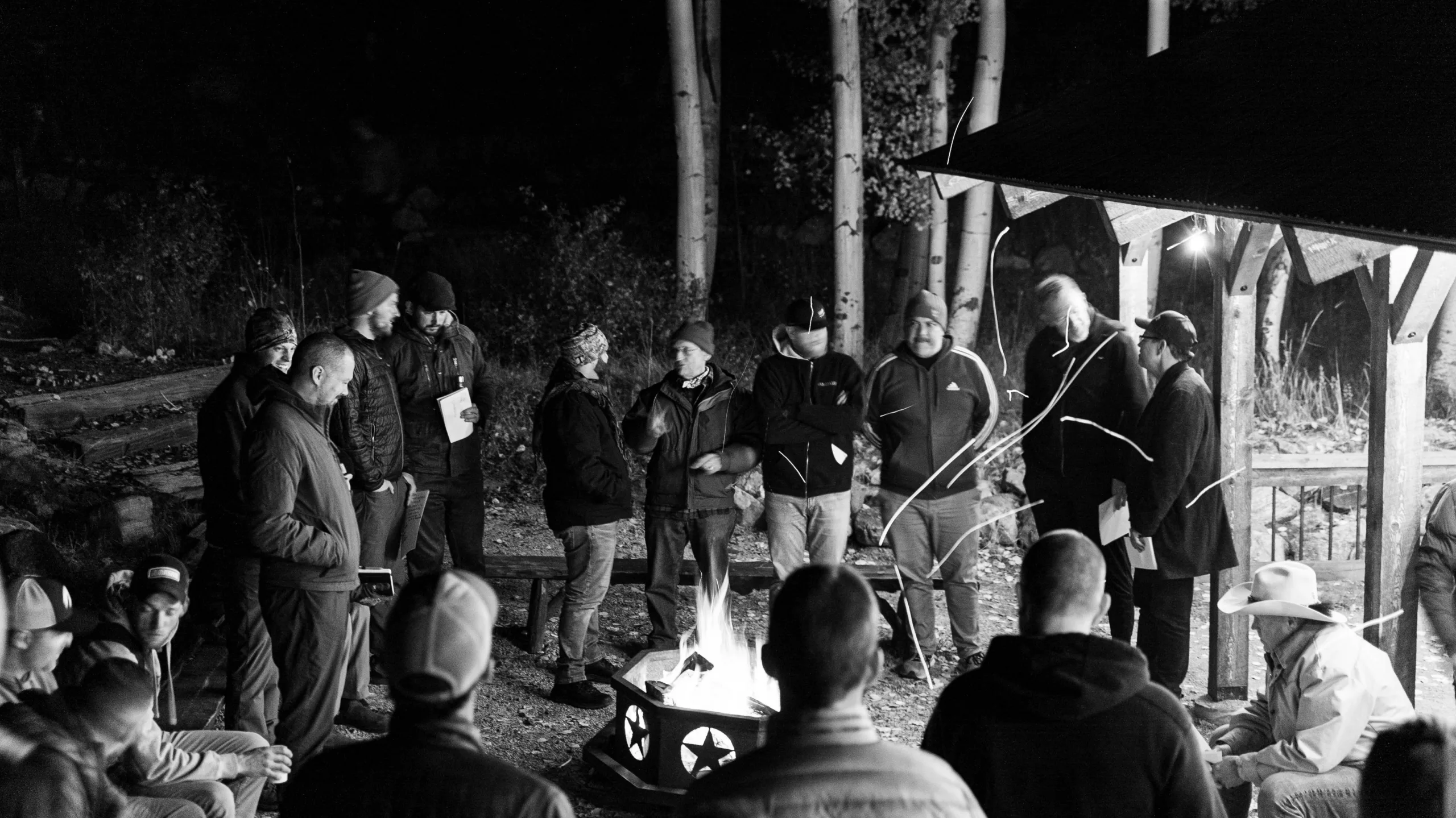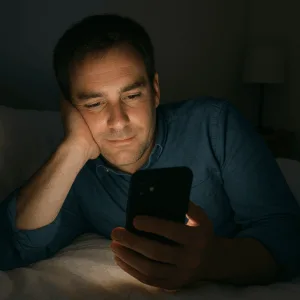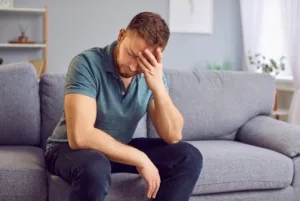Therapy That Works for Men: Understanding Male-Friendly Approaches
According to the CDC, men account for nearly 80% of suicides in the United States, despite making up just half of the population. At the same time, women use mental health services almost twice as often as men. These realities raise an important question: is therapy failing men, or have traditional models of therapy simply not been designed with men in mind?
For many men, the idea of sitting across from a therapist and talking about feelings does not resonate. Some avoid therapy altogether, while others start but quickly drop out because the process feels unfamiliar, uncomfortable, or unhelpful. The result is a troubling gap: men who desperately need support often do not get it.
This is where male-friendly therapy comes in. Male-friendly therapy is not a brand-new type of treatment but a way of delivering therapy that better aligns with men’s needs. It is an evolution in how therapy is practiced, designed to meet men where they are, respect their communication style, and highlight their strengths. By tailoring approaches that resonate with men, this model of therapy helps break down barriers and makes mental health care more accessible, effective, and sustainable.
Why Men Struggle to Access Therapy
When it comes to mental health, men often face unique barriers that prevent them from seeking help. Some of these barriers are cultural, while others come from the way therapy itself has traditionally been structured. Together, they create a situation where many men who could benefit from support either never reach out or leave therapy before it has a chance to work.
Stigma and Social Expectations
From an early age, boys are often taught to be tough, independent, and emotionally restrained. Asking for help can feel like a violation of those unwritten rules. Admitting to feelings of sadness, fear, or anxiety may feel like weakness rather than a normal part of being human. These beliefs make therapy seem like something “other people” do, not something for men who want to be seen as strong or capable.
Different Expressions of Distress
While women are more likely to show internalizing symptoms such as sadness, guilt, or withdrawal, men often display externalizing symptoms. This might look like irritability, sudden anger, increased drinking or substance use, compulsive work habits, or risk-taking behaviors. These outward behaviors are often overlooked or misinterpreted as character flaws rather than signs of underlying distress. Standard anxiety and depression screenings may miss these presentations, which means men’s struggles are frequently underdiagnosed or misunderstood.
Therapy Models That Miss the Mark
Traditional therapy often centers on face-to-face conversations about emotions. For some men, this format feels unnatural or uncomfortable. Many prefer approaches that involve action, problem-solving, or doing something side by side while talking. Others find that group therapy feels more natural, since it provides camaraderie, shared experience, and the chance to connect without being the sole focus of attention. Humor and metaphors can also be valuable tools, making it easier to approach difficult topics without feeling pressured to speak in an overly direct or formal way.
The Resulting Gap
These factors help explain why men are less likely than women to seek help and why their mental health outcomes are often worse. The gap is not about men being resistant to therapy. It is about therapy needing to adapt so that men can see its relevance and experience its benefits.
Bridging the Gap
The good news is that therapy does not have to miss the mark for men. By adapting how therapy is offered and delivered, clinicians can create an environment where men feel understood, respected, and engaged. This is the heart of male-friendly therapy: an approach that recognizes men’s unique challenges, builds on their strengths, and offers practical, meaningful ways to work through mental health struggles. Rather than asking men to change who they are to fit therapy, male-friendly therapy changes the process so it fits men.
What Is Male-Friendly Therapy?
Male-friendly therapy is an approach that recognizes how men often experience, talk about, and respond to mental health challenges differently than women. Instead of expecting men to adapt to traditional therapy models, male-friendly therapy adapts to men.
At its core, male-friendly therapy is about meeting men where they are. It acknowledges that cultural expectations, social pressures, and personal identity all shape how men view mental health and how comfortable they feel opening up in therapy. A male-friendly therapist does not assume men are resistant, unemotional, or uninterested. Instead, they recognize that men often need therapy to be more direct, structured, and action-oriented in order to feel relevant and effective.
Some of the distinct principles of male-friendly therapy include:
- Practical, goal-driven work that emphasizes action and results, not just discussion.
- Communication styles that feel natural for men, such as activity-based conversations, “shoulder-to-shoulder” dialogue, or group formats.
- Strength-based framing, which treats qualities like problem-solving, courage, and resilience as assets rather than obstacles.
- Transparency and structure, with clear explanations of what therapy involves, what progress looks like, and how goals will be measured.
- Partnership over hierarchy, where the therapist collaborates with the client rather than prescribing a rigid path.
By incorporating these elements, male-friendly therapy creates an environment where men are more likely to stay engaged, feel respected, and make meaningful progress. For some men, this might be the first time therapy feels like it was designed with them in mind.
What is therapy. YouTube, uploaded by Movember, May 25, 2023.
Key Features of Male-Friendly Therapy
Action-Oriented Approaches
For many men, progress feels real when it is measurable. Male-friendly therapy often emphasizes concrete steps, strategies, and skills rather than open-ended conversations. Instead of spending sessions only exploring emotions, therapists help men define goals, create action plans, and track progress over time.
This approach also does not mean ignoring deeper issues or past traumatic experiences. A male-friendly therapist will help clients process painful memories while still keeping a focus on movement and growth. As Stephen Rodgers, LCSW, explains: “When working with men and boys, we frame therapy as taking action to solve the problem. That includes facing what has happened in the past, but also building practical ways to move forward.”
Communication Styles That Work for Men
Not all men are comfortable with face-to-face, emotionally intense conversations. Male-friendly therapy acknowledges this and adapts communication styles to make sessions feel more natural.
Some men prefer “shoulder-to-shoulder” conversations, where talking happens during an activity or in a less direct format. Others find that group therapy feels more natural, since it provides camaraderie, shared experience, and the chance to connect without being the sole focus of attention. Humor and metaphors are also valuable tools, making difficult topics easier to approach while reducing the pressure to be overly serious at every moment.
Strength-Based Framework
Male-friendly therapy challenges the idea that traditional masculine traits are barriers to mental health. Instead, it reframes qualities such as problem-solving, courage, independence, and responsibility as strengths that can be harnessed in the healing process.
Consider a man named James, who struggles with anxiety but prides himself on being the “fixer” in his family. Rather than asking him to let go of that identity, his therapist helps him apply it to his mental health. Together they break down his worries into manageable steps, create an “anxiety audit” to identify triggers, and use structured approaches like EMDR to reprocess difficult memories. His drive to solve problems becomes a strength, not a liability.
When James worries that seeking help makes him weak, the therapist reframes it: getting support is a strategic choice, much like how a leader brings in a consultant to strengthen the team. As Rodgers explains, “Masculine traits like problem-solving and responsibility are not the enemy of good mental health. In fact, they can be some of the best tools men bring into therapy.”
Transparency and Structure
Many men feel more comfortable in therapy when they know what to expect. Male-friendly therapists emphasize transparency by clearly explaining how sessions work, what progress looks like, and how long treatment might take. Men learn that therapy is confidential and private.
This might include outlining the phases of therapy, discussing session frequency and costs, and clarifying the therapist’s role from the beginning. Having this structure in place makes therapy feel more like a plan with clear goals — something many men find reassuring and motivating.
Partnership Approach
Male-friendly therapy is collaborative. Instead of positioning the therapist as the expert who dictates the process, this approach views the client as an active partner. The therapist brings professional expertise, but the man brings his lived experience and knowledge of what matters most in his life.
This partnership creates a sense of shared responsibility and respect. Men are invited to be decision-makers in their own treatment, choosing strategies that align with their values and preferences. This balance can increase buy-in and help men feel more invested in their progress.
Embracing Positive Masculinity
Too often, discussions about men’s mental health frame masculinity itself as the problem. Male-friendly therapy takes a different view. It recognizes that traits often associated with masculinity — such as courage, self-reliance, and protectiveness — can be powerful tools for growth and healing when used positively.
As Rodgers notes, “For too long there has been a harmful myth that masculinity is to blame for men’s poor mental health. In reality, these traits can be powerful catalysts for positive change in therapy.”
By embracing positive masculinity, therapy helps men see their identity not as something to overcome, but as a resource to build upon. This reframing reduces shame, builds confidence, and encourages men to engage in the therapeutic process without feeling like they have to abandon who they are.
Examples in Practice
Individual Therapy Example: James
James, a father in his forties, came to therapy struggling with anxiety. He often described himself as the “fixer” in his family, the one everyone leaned on during crises. In traditional therapy, this role might have been framed as a burden. But in male-friendly therapy, his identity as a problem-solver was used as an asset.
Together with his therapist, James created what they called an “anxiety audit.” They broke his stressors down into manageable parts, identified negative experiences that still affected him, and used EMDR to reprocess these memories. By structuring therapy in a way that resembled his natural problem-solving style, James began to feel more capable and confident. His drive to “fix things” became a strength, not a liability.
Group Therapy Example: Marcus
Marcus, a man in his late twenties, struggled with feelings of isolation after a difficult breakup. Sitting across from a therapist in a one-on-one setting felt overwhelming, and he worried he would not know what to say. Instead, he joined a men’s therapy group.
In that group, Marcus quickly discovered the power of camaraderie. Conversations often started around everyday topics — work stress, hobbies, even humor — before opening the door to more vulnerable discussions. Hearing others speak openly helped him feel less alone, and he began to share more of his own story. The group setting made therapy feel less like being “in the spotlight” and more like being part of a team working through life together.
Activity-Based Example: David
David, a veteran in his early fifties, struggled with depression but found sitting in a therapist’s office daunting. His therapist suggested an alternative: walking sessions. Shoulder-to-shoulder conversations while moving eased the pressure of direct eye contact.
As they walked, David opened up more naturally. The rhythm of movement made it easier to talk about difficult subjects, and the physical activity itself provided a small boost in mood. By pairing therapy with an activity, David found the process less intimidating and more engaging.
Framing Masculinity as a Strength
Across these examples, one theme remains consistent: therapy is more effective when it respects men’s natural strengths. Whether it is problem-solving, camaraderie, humor, or resilience, male-friendly therapy treats masculinity as a resource rather than a barrier.
As Stephen Rodgers, LCSW, explains: “Masculinity itself is not the problem. The challenge is making therapy relevant to men’s lives so they can use those traits as tools for healing.”
Innovative Treatment Formats
Male-friendly therapy is not limited to traditional office sessions. Many men benefit when therapy expands into formats that feel more natural and engaging. By offering creative options, therapists can reach men who might otherwise avoid or drop out of treatment.
Men’s Sheds and Community Programs
Originating in Australia, the idea of Men’s Sheds has spread worldwide as a way for men to gather, build, and connect. These community spaces allow men to work on projects side by side — repairing tools, building furniture, or learning new skills — while naturally opening up conversations.
Coaching-Style Approaches
Some men respond well to therapy that feels more like coaching. In these cases, the emphasis is on practical strategies, performance improvement, and accountability. The therapist serves as a guide who helps the client identify obstacles, create structured goals, and measure results over time.
Group Therapy
Group settings continue to be a powerful format for men. In groups designed specifically for men, participants experience camaraderie, validation, and perspective from peers who face similar struggles.
Telehealth and Video Sessions
Flexibility is another hallmark of male-friendly therapy. For men juggling careers, families, and busy schedules, telehealth sessions provide convenient access to support without the barrier of commuting.
Activity-Based Sessions
Therapy does not always have to take place sitting in a chair. Some therapists offer walk-and-talk sessions, outdoor activities, or integrated movement practices that allow conversation to unfold more naturally.
Finding the Right Male-Friendly Therapist
Choosing a therapist is one of the most important decisions a man can make for his mental health. The challenge is that not every therapist is trained or comfortable in adapting their approach to fit men’s needs. Knowing what to look for can make all the difference in finding a good match.
- Look for Transparency and Structure: A male-friendly therapist will be clear from the start about how therapy works, including expectations, costs, and goals.
- Pay Attention to Communication Style: A therapist should adapt to your way of connecting, whether that includes humor, metaphors, or activity-based dialogue.
- Ask About Experience with Men’s Issues: Male-friendly therapists understand externalizing symptoms like irritability, substance use, or risk-taking and can address them without judgment.
- Look for a Strength-Based Perspective: Masculinity should be treated as a resource, not a flaw.
- Consider the Fit, Not Just the Credentials: The therapeutic relationship is often the strongest predictor of progress.
Conclusion: Taking the Next Step
Male-friendly therapy is not about creating an entirely new system of mental health care. It is about making therapy more relevant, approachable, and effective for men. By adapting communication styles, emphasizing action and structure, and reframing masculine traits as strengths, this approach ensures that therapy meets men where they are.
Whether you are struggling with stress, depression, anxiety, trauma, relationship issues, or simply want to feel more like yourself, there is a version of therapy that can work for you. Male-friendly therapy makes it easier to take that first step and stay engaged in the process.
At Denver Men’s Therapy, we specialize in approaches designed specifically for men. Our therapists understand the unique pressures men face, from cultural expectations to the demands of work, relationships, and identity. We offer individual therapy for men, group therapy for men, couples counseling, and EMDR therapy, as well as innovative options like ketamine-assisted psychotherapy.
Taking care of your mental health is just as important as maintaining your physical health. If you are considering therapy, take the time to find a therapist who understands your needs and works in a way that makes sense to you.
Ready to start? Contact us today to schedule a consultation and learn how male-friendly therapy can support your path forward.






